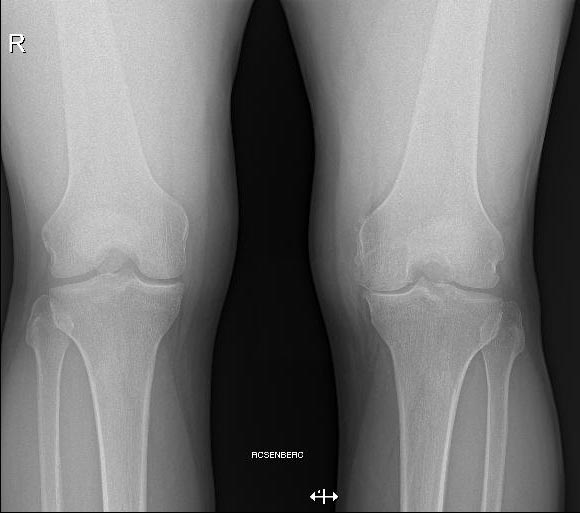Clinical case of a 51 year-old man affected by left medial knee osteoarthritis. He underwent medial unicompartmental knee arthroplasty
Knee osteoarthritis is a degenerative disease that affects the lining cartilage of the femur, tibia or patella, causing the exposure of bone tissue and

increased friction between the surfaces themselves, resulting in consequence pain and functional limitation. When osteoarthritis affects only one knee compartment a unicompartmental knee arthroplasty can be performed.
The unicompartmental knee arthroplasty (UKA) is a sparing surgery procedure where only 1 of the 3 compartments of the knee is replaced. The single-compartmental prosthesis consists of replacing the only damaged compartment, sparing the other two, and sparing the anterior and posterior cruciate ligaments, thus preserving the normal knee biomechanics. One of the most important advantages, in addition to a faster functional recovery, is to have reduced blood loss and consequently the very low risk of receiving blood transfusions, near to 0%. Of course you can replace the medial (internal) or lateral (external) compartment, or the patello-femoral compartment. In cases of bilateral knee osteoarthritis, joint replacement surgery can also be performed at the same time.

When osteoarthritis affects both femoro-tibial, internal and external joints, then two single-compartmental prostheses can be implanted at the same time, sparing the central pivot that contains the cruciate ligaments of the knee, responsible for stability and proprioception (bi-unicompartmental knee arthroplasty). This is a technically demanding intervention, but in experienced hands it guarantees functional results superior to those of the total knee arthroplasty. When osteoarthritis affects the femorotibial (medial or lateral) and the patello-femoral compartment, a bi-compartmental knee arthroplasty can be performed, sparing the central pivot.
Here we present the clinical case of a 51 year-old man affected by left medial knee osteoarthritis (Fig. 1). He referred a previous knee trauma several years ago and subsequent knee arthroscopy for internal meniscectomy. For some years he has been experiencing medial pain under load and when he does the stairs. It therefore performed x-rays which showed advanced medial osteoarthritis refractory to conservative treatment. He therefore underwent medial unicompartmental knee arthroplasty (Fig. 2).

